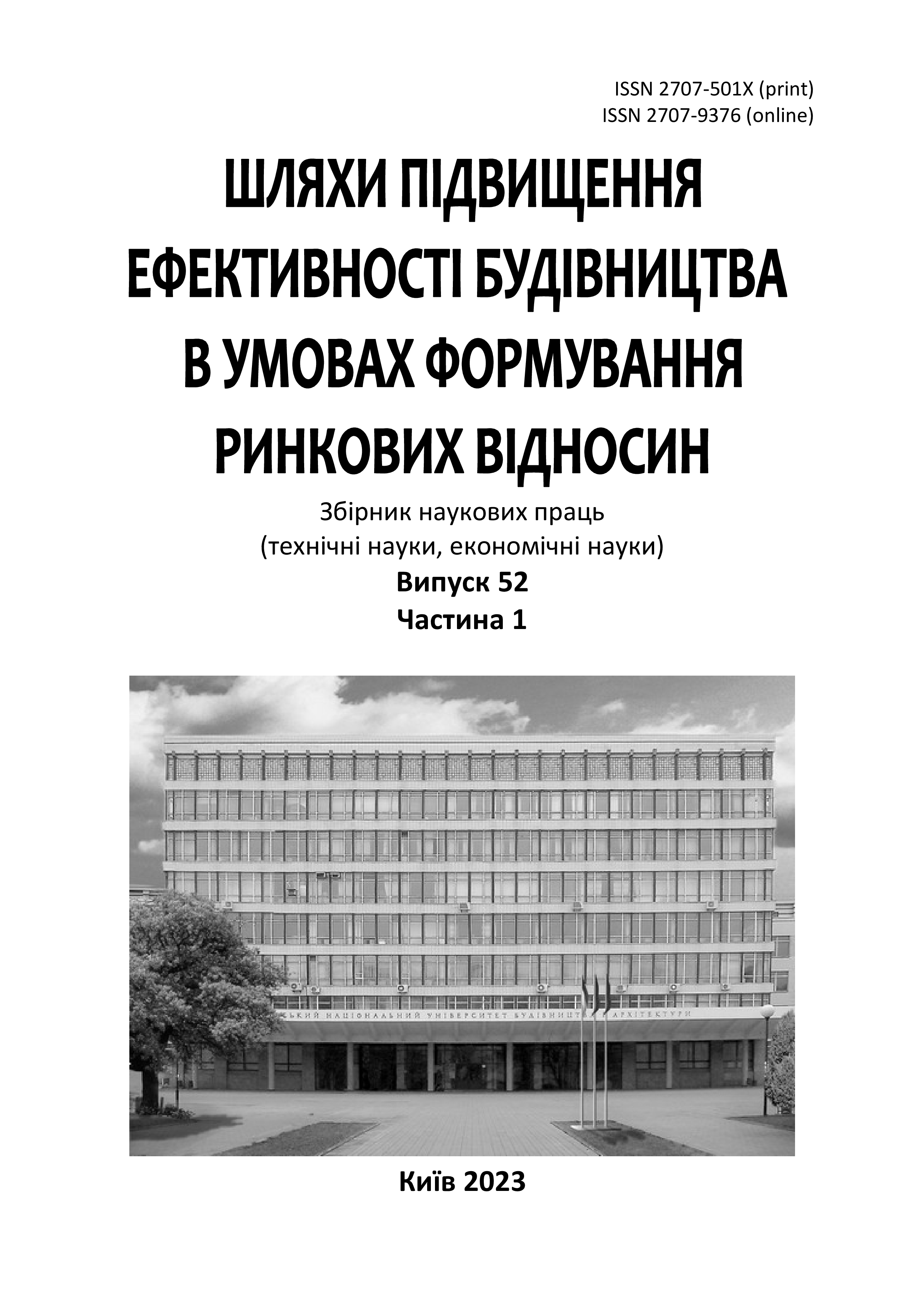Classification of sliding formwork systems
DOI:
https://doi.org/10.32347/2707-501x.2023.52(1).157-170Keywords:
sliding formwork system (slipform construction), forming elements (formwork panels), jack, jack rod, jack frame, working platformAbstract
The article discusses modern sliding formwork systems, which are different from other types of formworks in that they can be moved during the construction of structures without the need for intermediate stages of formwork installation and removal. This, and the possibility of using a high level of process automation, allows to increase the rate of monolithic construction and significantly reduce the number of working seams, which in turn increases the structural reliability and reduces the complexity of formwork operations. The development of constructive solutions for sliding formwork systems has created a significant range of varieties of these systems, which allows expanding the range of applications for sliding formwork.
Based on the analysis of existing sliding formwork systems, their classification is proposed according to the factors that influence the constructive solutions, namely: constructive solutions of forming elements, constructive solutions of the supporting part of the formwork system and the mechanism of movement of the formwork system in the process of constructing a monolithic structure. It is proposed to classify sliding formwork systems according to the following features of the structural solutions of the forming elements, namely: the size of the formwork panels; the shape of the surface of the forming elements; the location of the forming elements in relation to the structure being constructed; the geometry of the forming elements; the method of fixing the forming elements in relation to the surface of the structure being constructed; the material of the surface of the forming elements in contact with the freshly placed concrete mixture. According to the constructive solutions of the supporting part of the formwork system, it is proposed to consider the following features: the method of supporting the formwork part; the construction of jacking frames; the location of jacking rods. According to the mechanism of movement of the supporting part of the formwork system, it is proposed to distinguish the following features: elements that move in the process of raising a monolithic structure; direction of movement of the sliding formwork system; types of jacks used to move the formwork system; control system for moving the sliding formwork system. The presented classification takes into account technical parameters and functional properties, which contributes to a better understanding of the choice of the best type of formwork for specific construction tasks. The results of the study may be useful for engineers, architects and other construction industry professionals interested in improving the efficiency and quality of construction projects.
References
Дауров М.К., Тонкачєєв Г.М. Влаштування прямокутних паль методом занурення з виготовленням на форшахті. Містобудування та територіальне планування. 2017. Вип. 65. С. 153 - 157. URL: https://repositary.knuba.edu.ua/bitstreams/da5415a7-d846-40fa-b077-5531e03e0b4e/download
Заволока М.В. Монолітне домобудування. Одеса: ОДАБА, 2002. 223 с.
Тонкачеєв Г.М. Югов А.М., Чепелянський А.Я., Москаленко В.І. Спосіб зведення монолітної будівельної конструкції: пат. 104020 Україна № a201113024; заявл. 07.11.2011; опубл. 25.12.2013, Бюл. № 24. 6 с.
Тонкачеєв Г.Н., Шарапа С.П., Клис М.В. Технологія зведення монолітних багатоповерхових будівель і перспективи її розвитку. Містобудування та територіальне планування. 2013. Вип. 47. С. 633-637 URL: https://repositary.knuba.edu.ua/bitstreams/3f198edc-1ab6-4313-b062-eddd07a48399/download
Шарапа С.П. Теоретичне та експериментальне дослідження процесу переміщення рухомого модулю зі стрічкою по бетону. Містобудування та територіальне планування. 2015. Вип. 57. С. 476 - 482. URL: https://repositary.knuba.edu.ua/bitstreams/5ffc0f13-43f2-436c-81f0-5106b4f8a276/download
Shapira A. Contemporary Trends in Formwork Standards. Journal of Construction Engineering and Management. Journal of Construction Engineering and Management. Volume 125, Issue 2. DOI: 10.1061/(ASCE)0733-9364(1999)125:2(69)
Formwork and falsework for heavy construction. Bulletin No. 48, January 2009. DOI: doi.org/10.35789/fib.BULL.0048. URL: https://www.fib-international.org/publications/fib-bulletins/formwork-and-falsework-for-heavy-construction-114-detail.html
Peurifoy R.L., Oberlender G.D. Formwork for Concrete Structures. Fourth Edition. The McGraw-Hill Companies, Inc., 2011. 543 р.
Diaconu R., Paul D. Brindasu Optimum Solution for Sliding Formwork Equipment. Applied Mechanics and Materials. 2015. Vol. 808. P. 298-306. DOI: 10.4028/www.scientific.net/AMM.808.298
Wei Li, Xiaoshan Lin, Ding Wen Bao, Yi Min Xie. A review of formwork systems for modern concrete construction. Structures. Volume 38, April 2022, P. 52-63. DOI: 10.1016/j.istruc.2022.01.089
Li Yudian. Analysis on the causes and prevention measures of the potential safety hazard of the formwork support system. IOP Conference Series Earth and Environmental Science. 2020. 510: 052021. DOI: 10.1088/1755-1315/510/5/052021
Hawkins, W.J., Herrmann, M., Ibell, T.J., Kromoser, B., Michaelski, A., Orr, J.J., Pedreschi, R., Pronk, A., Schipper, H.R., Shepherd, P., Veenendaal, D., Wansdronk, R. and West, M. Flexible formwork technologies – a state of the art review. Structural Concrete, 2016, 17: 911-935. https://doi.org/10.1002/suco.201600117
Arumsari P., Xavier Ch. Cost and time analysis on the selection of formwork installation method. IOP Conference Series Earth and Environmental Science. 2020, 426:012042. DOI: 10.1088/1755-1315/426/1/012042
Scanada Group. An Unparalleled Level of Experience and Expertise. URL: https://www.scanada.com/
SRG Global. URL: www.srgglobal.com.au
GOMACO Corporation. URL: www.gomaco.com
Downloads
Published
How to Cite
Issue
Section
License

This work is licensed under a Creative Commons Attribution 4.0 International License.
Authors who publish with this journal agree to the following terms:
- Authors retain copyright and grant the journal right of first publication with the work simultaneously licensed under a Creative Commons Attribution License that allows others to share the work with an acknowledgement of the work's authorship and initial publication in this journal.
- Authors are able to enter into separate, additional contractual arrangements for the non-exclusive distribution of the journal's published version of the work (e.g., post it to an institutional repository or publish it in a book), with an acknowledgement of its initial publication in this journal.
- Authors are permitted and encouraged to post their work online (e.g., in institutional repositories or on their website) prior to and during the submission process, as it can lead to productive exchanges, as well as earlier and greater citation of published work (See The Effect of Open Access).

